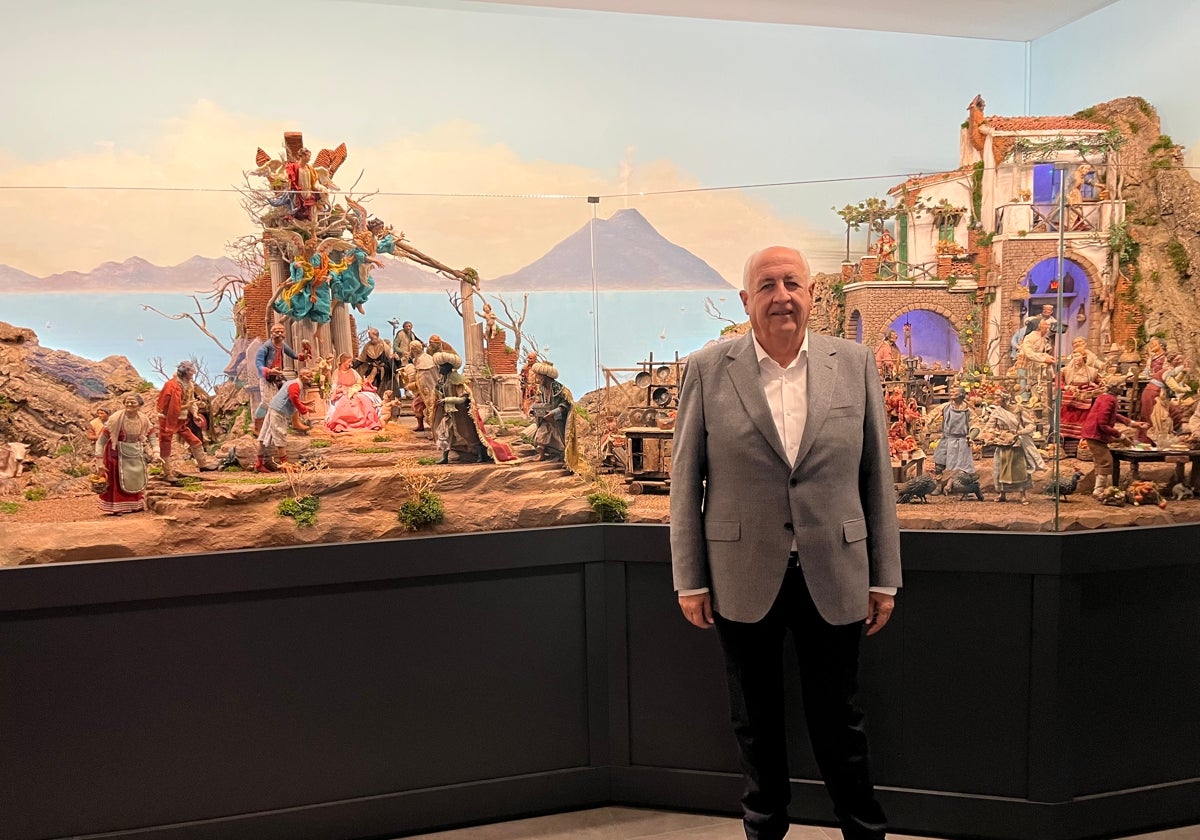From farmhouse to international gallery: the unique nativity art museum in an inland Malaga town
More than 60 scenes are displayed in its seven rooms, some with a surprisingly contemporary focus. Recent pieces address issues such as the war in Ukraine, the conflict between the Lebanon and Israel and the situation in Gaza
What began as a personal hobby has become an unrivalled museum of its kind in the heart of Malaga province. Antonio Díaz, architect by profession and passionate about the artistry involved in handmade nativity scenes, has managed to bring together in this unique museum in Mollina a collection that not only preserves centuries-old traditions, but also updates them with contemporary messages of peace and reflection. This is a place that celebrates the creativity, detail and magic of nativity scenes, and one which has put Mollina on the world map as a benchmark for lovers of these works of art.
In 2008 Antonio Díaz began his personal collection of nativity scenes, motivated by a personal interest that awoke in him while studying architecture at the University of Granada. "I saw nativity scenes and felt a deep emotion," Díaz confessed. This admiration for such pieces led him to travel around Spain with his wife, visiting places such as Cadiz, Seville and Jerez, in search of these artistic representations that so fascinated him.
On one of his trips he met Antonio Bernal, a nativity scene maker whose passion for dioramas (3-D models) left a mark on Díaz. Bernal created nativity scenes with materials such as moss and cork without resorting to traditional stick figures, which amazed Díaz and led him to reflect: "What a shame that no one can see these works of art." It was then that he decided that these pieces should be exhibited for all to enjoy.
The museum's beginnings were modest. Díaz began by displaying nativity scenes in his own rural home, a space of barely 100 square metres. The initial collection included nativity scenes of different styles: Catalan, Neapolitan, Andalusian and from central Spain, among others. With just four or five sets he started a project that, over time, grew exponentially. "We would travel to Catalonia, they would give us five, then to Levante, and they would give us seven or eight more," he recalls. The demand for them to be seen led to the creation of a larger space, giving rise to the Museo de Arte Belenista de Mollina in 2017, together with the Díaz Caballero Foundation, for which Díaz is the promoter and avid supporter.
Today the museum occupies 5,000 square metres, divided between exhibition areas and a basement where the rest of the collection is stored. More than 60 nativity scenes are displayed in its seven rooms, some with a surprisingly contemporary focus. Recent pieces address issues such as the war in Ukraine, the conflict between the Lebanon and Israel and the situation in Gaza, showing how nativity art can be a reflection of contemporary reality.
Antonio Díaz is clear that the talent of the nativity scene makers deserves to be recognised: "They are artists. They model figures, spaces and buildings inspired by classical and contemporary art movements. There is no question about that." To keep feeding the collection Díaz and his team have travelled all over the world in search of the best nativity scene makers and sculptors. Although the process is sometimes tough, he assures us that each discovery is exciting and enriching.
New exhibits
Room seven of the museum houses new works of art that stand out for their conceptual depth and artistic innovation. Among them is 'Road to Freedom' by the islander (a common nickname given to someone from the Canaries), José Manuel Coto, which shows a version of the Holy Family fleeing war and misery after crossing a border wall - a powerful call for peace. Another highlight is Descanso en la Huida (literally, resting while on the run), a work that evokes a cold and foggy day in the forest thanks to the ingenious use of light fabrics and light effects. For its part, 'The Humble Alms' recreates the birth of Jesus in a colourful souk, full of architectural and cultural details, such as a plaque in Arabic that reads: "Water is the driving force of all nature."

Antonio Díaz, as well as being a collector and the museum's promoter, shows a deep passion for each of the pieces that make up this unique collection. For him, each work has its own charm and meaning. "I am always asked which one is my favourite, but I can never decide. They all have something special that makes them different from the rest", he said with much enthusiasm, making clear his admiration for the diversity and detail that characterises the many nativity scenes on display.
His passion is also reflected in the connection he seeks to generate with visitors, especially the youngest ones. During the Christmas season the museum is filled with joy when many schools visit. "At Christmas time, many schools come. Yesterday, out of 10 groups, six were from schools. It is wonderful to see how the children learn about this art and get excited with every detail," he said, indicating the educational and cultural impact that the museum has on the new generations.
As part of its commitment to the nativity scene tradition, the museum in Mollina has launched the fourth edition of its Christmas greetings competition, an initiative that seeks to encourage creativity and bring new generations closer to this art form, declared an Asset of Cultural Interest of Andalucía and also on Unesco's Representative List of Intangible Cultural Heritage of Humanity. This competition, which this year reaches its second edition open to schoolchildren from all over Andalucía, is aimed at pupils in the 5th and 6th years of primary education. "We focus on the Andalusian level, but all children who want to participate are welcome to do so," he explained.
The Museo de Arte Belenista de Mollina opens its doors from Monday to Sunday, from 10am to 8pm, including public holidays such as 24, 25 and 31 December, as well as 1 and 6 January, with opening hours adapted so that everyone can enjoy these works on show. Antonio Díaz invites locals and visitors to discover a place where tradition and art meet in a unique tribute to creativity.

